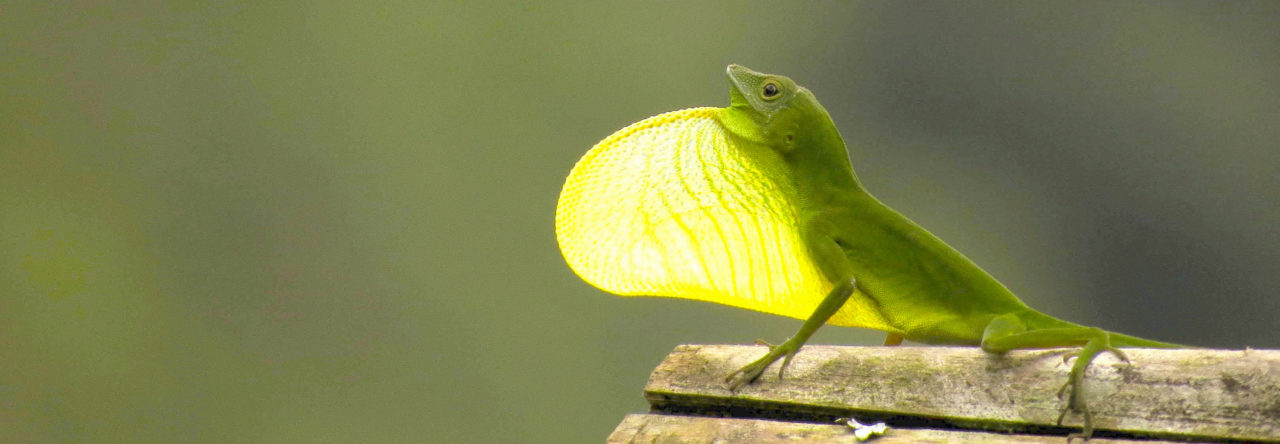 Today marks a sad day in the history of anole biology: the anole hunter’s best friend has just gone out of production. Before explaining what I mean, I need to provide some additional details for the uninitiated. Most anoles are caught primarily with a lasso made of dental floss attached to the end of a pole. We’ve debated the best material for making lassos but haven’t spent much time on the poles (except here). Although just about anything ranging from a stick to a golf club can be used as a lizard catching pole, the best lizard poles are generally fashioned from fishing rods. Fishing rods are ideal for lizard catching because they are both light and long. For many years, the biggest challenge associated with the use of fishing poles was that they can be relatively difficult to transport. Rods that could telescope out to 12-20′ generally had only three or four segments, meaning that even a fully collapsed rod was 4-5′ long (too long to be easy to travel with or carry around in the field). This problem was solved a number of years ago when Cabela’s began producing a new line of telescoping panfish rods that could extend from just over a foot to 10-14′ (they’re no longer listed in the Cabela’s catalogue but you can still find prices and product information at some on-line retailers like Yahoo). If you check out the reviews, you’ll see that people have used these poles for everything from fishing to herping to displaying “worship banners.” These inexpensive Cabela’s rods have been my primary anole catching tool for over a decade. I was deeply saddened when I learned today that Cabela’s will no longer be filling orders for their telescopic panfish rods. We actually placed this order weeks ago and have been told they were on back-order until today, when we were told simply that our order could not be filled and was being cancelled. I guess we’re going to have to go through and repair all those broken rods we accumulated over the past decade…
Today marks a sad day in the history of anole biology: the anole hunter’s best friend has just gone out of production. Before explaining what I mean, I need to provide some additional details for the uninitiated. Most anoles are caught primarily with a lasso made of dental floss attached to the end of a pole. We’ve debated the best material for making lassos but haven’t spent much time on the poles (except here). Although just about anything ranging from a stick to a golf club can be used as a lizard catching pole, the best lizard poles are generally fashioned from fishing rods. Fishing rods are ideal for lizard catching because they are both light and long. For many years, the biggest challenge associated with the use of fishing poles was that they can be relatively difficult to transport. Rods that could telescope out to 12-20′ generally had only three or four segments, meaning that even a fully collapsed rod was 4-5′ long (too long to be easy to travel with or carry around in the field). This problem was solved a number of years ago when Cabela’s began producing a new line of telescoping panfish rods that could extend from just over a foot to 10-14′ (they’re no longer listed in the Cabela’s catalogue but you can still find prices and product information at some on-line retailers like Yahoo). If you check out the reviews, you’ll see that people have used these poles for everything from fishing to herping to displaying “worship banners.” These inexpensive Cabela’s rods have been my primary anole catching tool for over a decade. I was deeply saddened when I learned today that Cabela’s will no longer be filling orders for their telescopic panfish rods. We actually placed this order weeks ago and have been told they were on back-order until today, when we were told simply that our order could not be filled and was being cancelled. I guess we’re going to have to go through and repair all those broken rods we accumulated over the past decade…



















Comments
Reply
Read More